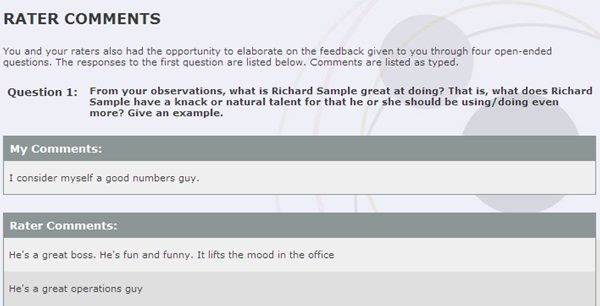By Nick Tasler, M.S., Lac D. Su, M.S., & Dr. Jean Greaves
The fifth most popular Dilbert comic strip in the cartoon’s history begins with Dilbert’s boss relaying senior management’s explanation for the company’s low profits. In response to his boss, Dilbert asks incredulously, “So they’re saying that profits went up because of great management and down because of a weak economy?” To which Dilbert’s boss replies, “These meetings will go faster if you stop putting things in context.”
We may chuckle, but we have to wonder if the cartoon’s popularity is due mostly to the sad truth it conveys. Are managers truly blind to their weaknesses, or are they just incapable of acknowledging their own shortcomings? If either is the case, what does that mean for anyone involved in developing leaders?
To find out, TalentSmartEQ® researchers analyzed over 6,000 ratings from direct reports, peers, and supervisors of 523 leaders using the 360°Refined™ leadership survey. We discovered that leaders are most likely to overestimate themselves on “self-awareness”—the ability to recognize how one’s own emotions impact and are influenced by other people. It may be that the hopelessly unaware managers depicted in Dilbert reflect today’s leaders fairly accurately.


From the Outside Looking In
Contrary to what Dilbert might have us believe, however, leaders are people just like you and me. It is doubtful that the gaps in their self-awareness are due to deceitful, Machiavellian motives, or severe character deficits. In fact, the leaders in our study were relatively accurate in rating themselves on “credibility” and “integrity.” In most cases, leaders did not consciously try to inflate their scores; leaders—like everyone else—are tempted to view themselves in a more favorable light than other people do. Good intentions notwithstanding, helping leaders discover exactly where they have gaps in their perception is crucial for guiding their efforts to develop professionally and perform better.

As shown in the table on page 1, none of the largest gaps in perception between self ratings and others’ ratings occurred in the Core Leadership competencies, which address such nuts-andbolts skills as “results-focus,” “business acumen,” “vision,” “risk-taking,” etc. The bad news is that all of the top gaps involved a leader’s skill at understanding how his or her behaviors and decisions impact other people. That finding is a bit disconcerting, since effective leadership is virtually impossible without effective interactions between leaders and followers.
What this means is that many of today’s leaders have a decent grasp on their ability to manage a business, yet remain largely blind to their weaknesses in leading other people.
Refining Leadership Development
There’s nothing more powerful than receiving feedback from the people who matter most—the members of the leader’s team. Reading this article or the latest book on leadership is not enough to raise leaders’ awareness of where they drop the ball. Even a mandatory training session isn’t personalized without 360° feedback. When the message becomes personalized, leaders take notice. They can’t deny it when they see firsthand the gaps between their perceptions of themselves and the perceptions of the people who work the closest with them.

360° Refined™measures a leader’s skills in the 22 Core and Adaptive leadership competencies most critical to job performance.
Results are delivered in a report that highlights strengths and areas for improvement and reveals gaps in a leader’s perception.
To support follow-on learning and development, the feedback report includes e-learning featuring clips of Hollywood movies, television, and historical events, plus a complete online Goal-Tracking System™ to ensure lasting change.

How It Works
360° Refined™ is fast, clear, and complete. In just 15 minutes, participants deliver feedback through 75 scored questions and four open-ended questions.
 The Process
The Process
- A leader is invited to rate him/herself online, as are his/her boss(es), peers, direct-reports, and others (such as customers or board members). You control the administration and can check response rates in real time.
- Once responses are in, you open the report with the click of a button. Responses remain anonymous to the administrator, so a leader could administer his or her own survey if needed.
- Share the results in printed or online report format. Walk into the feedback session with the printed report and provide your client with high level results supported by detailed data and comments. The access code is provided in the report so a leader can return to his or her office and access the online results to continue with e-learning and goal setting.
- Access to e-learning and goal-tracking is on-going so leaders can revisit their reports, forward results to others, track their progress on their action plan, and send themselves email reminders weekly, monthly, or quarterly to continue developing.
ABOUT THE AUTHORS:
Lac D. Su, M.S.
Lac D. Su is the Director of Strategic Alliances for TalentSmartEQ, the leading provider of emotional intelligence tests, products, and training. He forms and manages relationships with key TalentSmartEQ resellers and assists clients with the implementation of skill development initiatives.
Jean Greaves, Ph.D.
Dr. Jean Greaves is the co-author of the bestselling Emotional Intelligence 2.0 and the cofounder and CEO of TalentSmartEQ, the world’s leading provider of emotional intelligence tests, emotional intelligence training, and executive coaching. Her bestselling emotional intelligence books have been translated into 25 languages and are available in more than 150 countries. Dr. Greaves leverages her twenty-five year track record of consulting, speaking and applied research. She has written for, or been covered by, Newsweek, Fortune, Forbes, The Wall Street Journal, The Washington Post, and The Harvard Business Review.